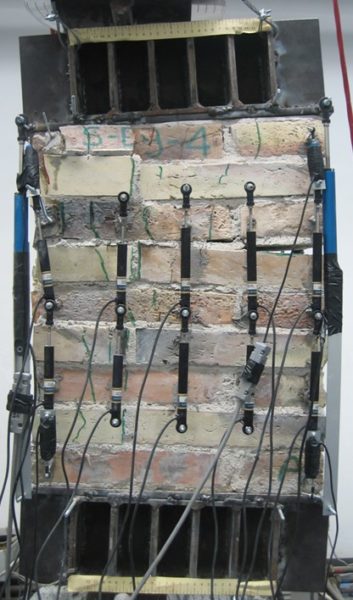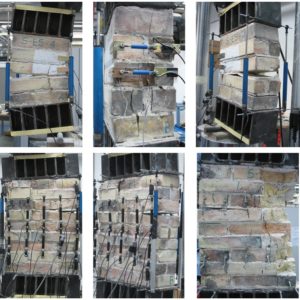Assessment of masonry arch bridges
Historic brickwork under compression and bending
Description
The study gives a contribution on the knowledge of the compressive behaviour of brickwork used in railway bridges, and to the way this information can be incorporated in structural modelling. An experimental investigation was carried out on brickwork specimens made with old clay bricks and lime mortar such as to reproduce the original components and the arrangement of masonry arch bridges. The specimens were subjected to monotonic and cyclic displacement-controlled compression tests, under centred and eccentric loading. Based on experimental results, a beam model with fibre cross-section was used to describe the macroscopic behaviour of brickwork, where the fibre constitutive relationship is estimated according to the concentric tests. Eccentric tests were simulated and the comparison between theoretical predictions and experimental results revealed the capability of the model to reproduce the global force-displacement and bending moment-curvature experimental behaviour. Therefore, it is suitable for the structural analysis of masonry arch bridges.
Key publications on this topic
- de Felice, G., Brencich, A. Brickwork under eccentric compression: Experimental results and macroscopic models. Construction and Building Materials, 2009;23(5)1935-1946. DOI: 10.1016/j.conbuildmat.2008.09.004.
- de Felice G., De Santis S. Experimental and numerical response of arch bridge historic masonry under eccentric loading. International Journal of Architectural Heritage, 2010;4(2):115-137. DOI: 10.1080/15583050903093886.

